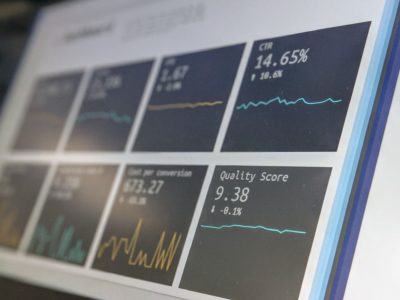Standard search engine optimization (SEO) tips usually revolve around keyword research, maintaining a fast page load speed, and building backlinks– all of which affect your search rankings. But something that isn’t usually provided as a ranking factor is focusing on social signals.
Social signals are the shares, likes, and general visibility a web page gets on social media platforms. Search engines perceive these signals as citations, similar to how they view backlinks. Therefore, although they may not be as strong a ranking factor as backlinks, social signals influence search rankings nonetheless.
As such, your SEO campaigns would be incomplete if you ignored social signals. So, in this review, we’ll cover five ways you can use social signals to boost your SEO. Let’s jump right in.
Here are some of the most effective ways to use social signals to improve your SEO. Some of these techniques are online marketing best practices. Therefore, they can also be beneficial to your content marketing efforts.
1. Analyze your customer personas
Knowing your potential customers help you craft content they’re likely to resonate with. These personas can show you the social platforms to use and the perfect time to share your content, among other things.
The benefits of buyer personas also go beyond SEO. A study by Itisma reported that 56% of businesses using buyer personas generated higher-quality leads 24% saw higher conversion rates.
Take a look at this sample customer persona:
Through this customer persona, a content marketing team would know what social media platforms to use for the best results.
For example, they can focus on creating optimized content for YouTube and Reddit since those are popular platforms among their ideal customers. They would also know what tone and even the pop culture references to use based on the age and interests of their target audience.
Your customer persona should contain details such as:
- Demographics: Their age, gender, location, educational level, and economic status.
- Interests: Their unique interests that may align with your product offerings.
- Online Behavior: Are they the type to spend more time on YouTube, Twitter, or Facebook? Are they online shoppers?
- Goals and pain points: What do they want to achieve? What are their frustrations?
To get this data, conduct market and audience research. You can start by analyzing your existing customer database. Use tools like Google Analytics and social media analytics for additional insights into your customers. Surveys and focus groups are also very helpful.
2. Focus on audience engagement
Audience engagement is crucial for generating social media signals. Engagement gets your social content on people’s feeds. It also gets more people clicking on your posts and reaching your website.
To boost audience engagement, create compelling content that evokes reactions from your followers. Think about posing questions and memes, running polls, and even creating contests and giveaways. These content types pique the user’s interest, allowing them to engage with your posts. This trick is very common in eCommerce, DTC, and even SaaS marketing plans.
It doesn’t just stop with your audience, though. Your social media manager should also reply to some of the comments or content shared by your audience. You can even go as far as resharing or reposting some of the creative content created by your followers. This will encourage even more people to participate.
A solid rule to follow is to focus on your content. Relatable and relevant content naturally garners audience engagement, especially on social media platforms. This springs from understanding your customer persona and having an idea about the content that will resonate with them.
3. Post regularly
Posting regularly is one of the best ways to stay on top of your customer’s minds. Regular posts may boost your reach and engagements since you’re constantly feeding your audience fresh content. Increased reach and engagement amplify your social signals even further.
Social media experts recommend posting at least 2-3 times per day. But ultimately, it’ll depend on the platform you’re using and your target audience. For example, one post per day may be enough for LinkedIn. Meanwhile, you can do with two or more posts on Twitter and Facebook.
Source: Asana
Therefore, create a social media content calendar, as shown above, and start scheduling your posts. It would also help to create multiple posts beforehand. For example, you can create your posts for the entire week and schedule using an appropriate social media scheduling tool.
You should also consider repurposing your content. For example, you can repurpose a blog into a Twitter thread. This is a great way to maintain consistent posting without stretching your team too much.
4. Collaborate with influencers in your niche
Influencers are well respected within their niches. They also have a massive following. Therefore, collaborating with influencers can help you boost brand awareness and website traffic. In fact, 60 percent of marketers say that influencer-generated content produces more engagement than brand content.
Meanwhile, increased brand awareness may increase branded searches and traffic. This could help search engines to start associating your website with a particular product.
Source: Trashhand
The other more direct benefit is when you work with influencers that have blogs. These influencers can link back to your website, giving you qualified referral traffic. Not only that, but the backlink will also boost your SEO.
Therefore, start looking for and collaborating with influencers. Of course, you want to go for influencers your target audience follows. Identifying those influencers should be easy if you already create a customer persona with that data point.
5. Improve your social media presence
All the tips above on this list will improve your social presence. A solid presence on social media channels builds brand awareness. And as more people start to talk about your brand and share your content, you generate more social signals.
To improve your social media presence, you’ll need to develop a robust social media strategy incorporating all the four items discussed above. It’s also important to engage with your audience. Don’t be that brand that only asks questions and posts links going to your site. Dig through the comments and reply to some of them. Take part in relevant trending topics. Post some memes every once in a while.
Engaging your audience boosts your audience and expands your reach. That means more engagements hence more powerful social signals for you.
Wrapping up
It may be unclear how impactful social signals are when it comes to search engine rankings. However, it’s hard to deny that more social signals can influence your SEO. The more people interact with your social content, the more exposure it gets. That increases the chances that more people will see and talk about your posts on their blogs. Some of those people may end up linking back to your site.
Viral social media posts can also increase your traffic and brand awareness. Increased brand awareness, on the other hand, may lead to more branded searches and traffic. This, too, can boost your SEO.
Therefore, you should not ignore social signals. And you can use the signals to improve your SEO in different ways, as discussed above. Start by analyzing your target audience, then focus on boosting audience engagement. Post regularly and collaborate with influencers. Lastly, maintain a commanding social presence. All the best.
Unlock the full potential of social signals with our expert organic marketing services in the Philippines. By boosting audience engagement and leveraging social media for SEO, you can drive traffic, enhance brand awareness, and improve search rankings. Contact us today to elevate your digital strategy and make the most of every social interaction!






